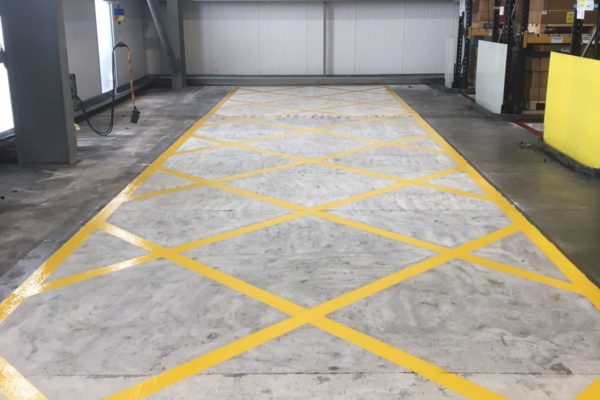Line Marking Identifying areas for pedestrians, fork trucks, stock control, parking bays, traffic management or signage. We supply line marking that is durable and fast curing, allowing you to get on with business. We use contrasting resin colours to aid traffic control and slip resistant aggregates can be added to aid safety.
Expansion joints are necessary in the floor and any Resin flooring system to allow heat-induced expansion and contraction. Missing, damaged or decayed expansion joints can cause dirt build up in the joints and trip hazards as the concrete edge deteriorates. Cracks can form in the concrete floor if expansion joints are not working properly. We remove and renew failed expansion joints and install new joints into Resin Flooring Systems.
Concrete repairs can be required to surface damage in concrete floors for many different reasons including defects in the original concreting work, i.e. honeycombing, voids, unsuitable aggregates, inadequate surface finishing or curing, etc. Damage to concrete floor surfaces can also be caused by impact, wear, abrasion or chemical exposure and attack during service. Cracks and holes in floors can be not only unsightly but also a trip hazard. From filling holes in factories, to removal and reinstating new concrete. Page offer a full service of concrete repairs. We ensure the correct technical procedure is carried out when repairing the concrete so that your floor will continue to look good.










